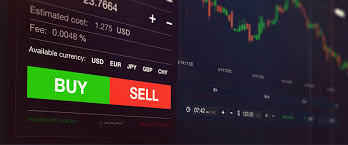
Forex trading, commonly referred to as the foreign exchange market, has become increasingly popular among investors and traders alike. With the ability to trade currencies 24 hours a day, five days a week, the forex market offers numerous opportunities for profit. In this guide, we will explore the fundamental concepts of forex trading, effective strategies, and essential tips to help you navigate this dynamic market. Whether you are a novice or an experienced trader, understanding the intricacies of forex trading can significantly impact your success. If you want to delve deeper into forex trading resources and tools, you can check out trading in forex trader-maroc.com.
Understanding Forex Trading
The foreign exchange market is the largest financial market in the world, with a daily trading volume exceeding $6 trillion. Unlike stock markets that have set hours, the forex market operates around the clock, starting on Sunday evening and closing on Friday evening (GMT). This continuous operation allows traders from different time zones to participate at their convenience.
In forex trading, currencies are traded in pairs. A currency pair consists of two currencies: the base currency and the quote currency. For example, in the currency pair EUR/USD, the Euro (EUR) is the base currency, and the US Dollar (USD) is the quote currency. Traders speculate on the price movement of one currency against another, aiming to profit from fluctuations in exchange rates.
Key Terms and Concepts in Forex Trading
Before diving into trading strategies, it is essential to familiarize yourself with some key terms and concepts:
- Pip: A pip is the smallest price movement in a currency pair. It typically refers to the fourth decimal place in most currency pairs.
- Lot: Forex trading is conducted in specific amounts known as lots. A standard lot is 100,000 units of the base currency, while mini and micro lots are 10,000 and 1,000 units, respectively.
- Leverage: Leverage allows traders to control larger positions with a smaller amount of capital. While it can amplify profits, it also increases the risk of significant losses.
- Spread: The spread is the difference between the bid price and the ask price of a currency pair. It represents the cost of trading in the forex market.

Strategies for Successful Forex Trading
To succeed in forex trading, traders often adopt various strategies based on their individual trading styles, risk tolerance, and market conditions. Below are some popular trading strategies:
1. Day Trading
Day trading involves opening and closing positions within the same trading day. Traders use technical analysis and charts to make quick decisions based on short-term price movements. This strategy requires significant market knowledge, a strong trading plan, and the ability to make fast-paced decisions.
2. Swing Trading
Swing trading focuses on capturing short- to medium-term price movements over several days or weeks. Swing traders typically rely on technical indicators and trend analysis to identify potential reversal points. This strategy allows traders to ride price swings while minimizing the need for constant market monitoring.
3. Position Trading
Position trading is a long-term approach where traders hold onto their positions for weeks, months, or even years. This strategy is based on fundamental analysis of economic factors and currency trends rather than short-term price fluctuations. Position traders rely on macroeconomic indicators and geopolitical events to guide their trading decisions.

4. Scalping
Scalping is a high-frequency trading strategy that involves making numerous trades within minutes or seconds to capture small price movements. Scalpers aim to make profit from minimal fluctuations, requiring quick execution and close monitoring of market conditions. This strategy often demands a strong understanding of technical analysis and a robust trading platform.
Risk Management in Forex Trading
Effective risk management is crucial for long-term success in forex trading. Without a proper risk management strategy, traders expose themselves to significant losses that can wipe out their trading capital. Here are some essential risk management practices:
- Set Stop-Loss Orders: A stop-loss order is an automatic instruction to close a trade at a predetermined price level to limit potential losses. It’s a crucial tool for managing risk and protecting your capital.
- Determine Position Size: Using proper position sizing techniques helps manage risk. Traders should determine the percentage of their capital to risk on each trade, ideally limiting it to 1-2%.
- Use Leverage Wisely: While leverage can increase potential profits, it can also amplify losses. Traders should understand their comfort level with leverage and adjust their position sizes accordingly.
- Keep Emotions in Check: Emotional trading can lead to poor decision-making and inconsistencies in trading strategies. Maintaining discipline and adhering to your trading plan is vital for success.
Trading Platforms and Tools
Having the right trading platform is critical for a successful forex trading experience. Various platforms offer different features, tools, and resources. Here are some commonly used trading platforms:
- MetaTrader 4 (MT4): This popular platform provides advanced charting tools, customizable indicators, and automated trading capabilities. It is widely used by traders globally.
- MetaTrader 5 (MT5): The successor to MT4, MT5 offers additional features such as more timeframes, enhanced trading tools, and improved analytics.
- cTrader: Known for its user-friendly interface and advanced trading capabilities, cTrader is another preferred choice among forex traders.
In addition to trading platforms, traders can utilize various tools for analysis and trade execution, such as economic calendars, market news feeds, and technical analysis software. Leveraging these resources enhances a trader’s ability to make informed decisions.
The Importance of Education in Forex Trading
Forex trading is not just about buying and selling currencies; it requires continuous learning and adaptation to changing market conditions. New traders should invest time in educational resources such as online courses, webinars, and trading books. Understanding market dynamics, technical analysis, and risk management are essential components of successful trading.
Moreover, engaging with trading communities and forums can provide additional insights, strategies, and support from experienced traders. Being part of a community can foster accountability and encourage learning from others’ successes and failures.
Conclusion
Trading in the forex market can be rewarding but also poses significant risks. Understanding the fundamentals, developing effective trading strategies, and implementing robust risk management practices are vital for achieving long-term success. As you embark on your forex trading journey, remember that education and continuous practice are your most valuable tools. With dedication and careful analysis, you can navigate the forex market and potentially achieve your financial goals.
Now that you are equipped with the knowledge, strategies, and tips for forex trading, it’s time to take the next step. Whether you opt for a demo account to practice or decide to trade with real capital, ensure you stay disciplined and maintain a consistent trading approach.